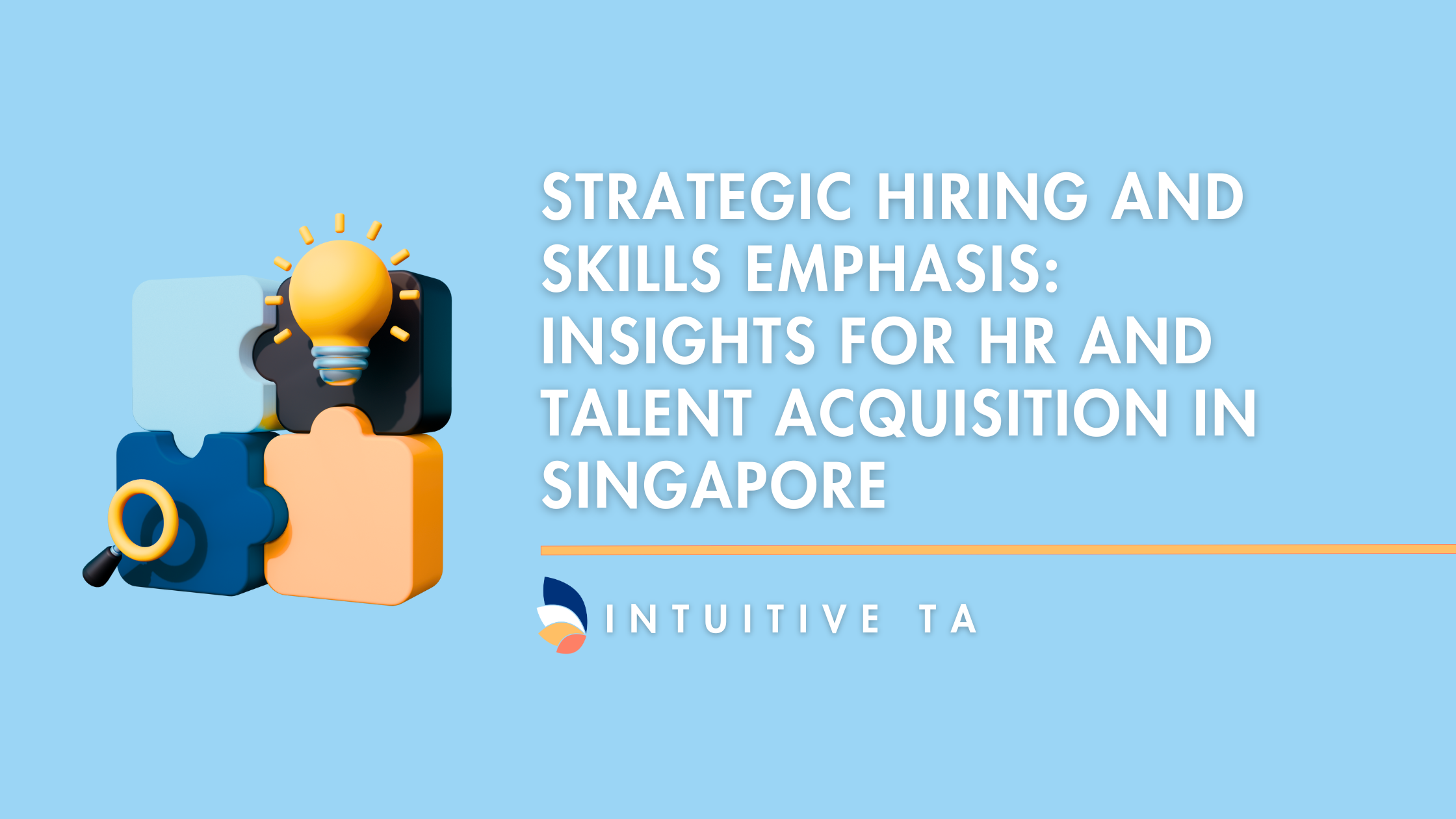Singapore’s hiring landscape is shifting. Over the past six months, overall recruitment activity has slowed by roughly 9%, reflecting a maturing job market where quality outweighs quantity. For HR and Talent Acquisition professionals, this requires a rethink of traditional hiring practices and a sharper focus on strategic talent alignment.
Moving from Volume to Strategic Hiring
The market is no longer about filling positions as quickly as possible. Companies are increasingly prioritising:
- Role Optimisation – ensuring job descriptions and responsibilities align with business strategy.
- Long-Term Impact – hiring decisions that support digital transformation, sustainability initiatives, and organisational growth.
- Skill-Centric Assessment – evaluating candidates for competencies, adaptability, and potential, rather than relying solely on degrees or years of experience.
For TA professionals, this means designing processes that not only identify skills but also predict long-term performance and cultural fit.
Upskilling and Internal Mobility
Strategic hiring is not just about external recruitment. Organisations are investing in upskilling and reskilling existing employees to fill skill gaps internally.
Key implications for HR:
- Develop structured learning and development programs to build critical capabilities.
- Map career pathways to retain talent while addressing organisational needs.
- Use talent analytics to identify employees ready for reskilling or promotion.
This approach reduces recruitment pressure, improves retention, and positions HR as a strategic driver of organisational capability.
Adopting Skills-Based Hiring
Skills-based hiring is gaining traction in Singapore, particularly for roles in technology, data analytics, AI, and sustainability. HR and TA teams should:
- Implement competency-based assessments to evaluate practical experience and problem-solving abilities.
- Update job descriptions to highlight required skills, soft competencies, and adaptability.
- Integrate skills testing or project-based evaluations into the recruitment process.
This shift not only widens the talent pool but also ensures candidates meet immediate and future business needs.
Practical Takeaways for HR and TA Professionals
- Audit Your Recruitment Processes – Ensure hiring workflows align with strategic business objectives.
- Leverage Data and Technology – Use ATS, AI, and analytics to identify top talent efficiently without compromising candidate experience.
- Engage Hiring Managers – Train them to assess competencies consistently and reduce bias in selection.
- Develop Internal Talent Pipelines – Prioritise upskilling programs and internal mobility to minimise external hiring pressure.
- Communicate Market Trends to Leadership – Position HR as a strategic partner by linking hiring strategy to business growth and sustainability goals.
Conclusion
For HR and Talent Acquisition professionals in Singapore, the shift toward strategic, skills-focused hiring is both a challenge and an opportunity. By focusing on competencies, internal development, and long-term alignment, TA teams can elevate their role from operational execution to strategic talent architects, driving organisational success in a competitive and evolving market.


